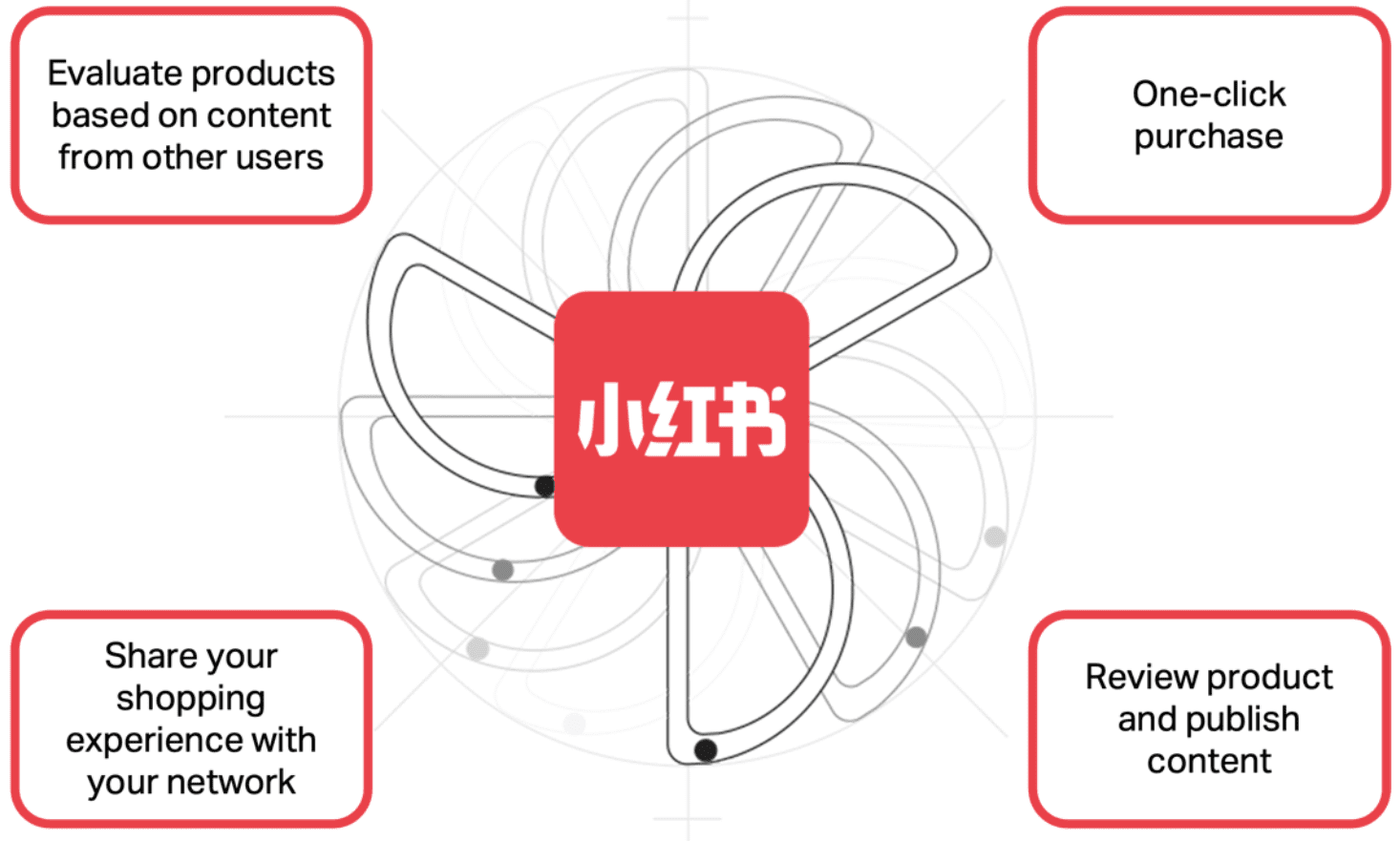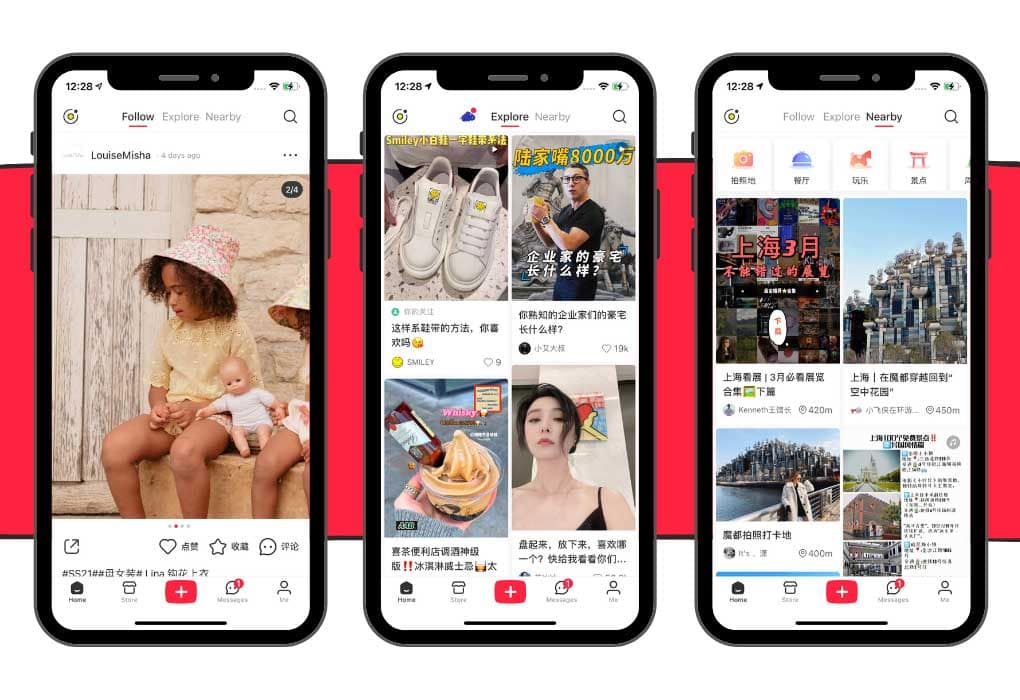Often compared to Instagram or Pinterest, Xiaohongshu (or RED in English) helps users discover and buy luxury, fashion and beauty products. It can also be an essential tool for building community around a brand in China, writes Mark Bellamy from Aiken Digital.
Comparing Chinese platforms to those we are familiar with in the West often provides a helpful analogy for understanding the way they work: WeChat and WhatsApp; Tmall and Amazon; Douyin and TikTok. However, the reality is often quite different from the analogy; most of the Chinese platforms mentioned may have started out conceptually similar to their Western counterparts, but they have evolved to incorporate a much more dynamic and multi-faceted set of functions and utilities. Even Douyin is light years ahead of TikTok in terms of e-commerce, and they are owned by the same company. One of the rising forces in Chinese eCommerce that you may have heard a lot about recently is the ‘Instagram of China’ Xiaohongshu (aka Little Red Book or RED).
But once again the comparison does not do the Chinese platform justice. RED started off more like Pinterest, a lookbook platform for users to mostly list and share images of their favourite fashion and beauty items with friends. But today, RED is much more than content. Targeting 18-to-35-year-old Chinese urban females, the platform helps users discover and buy luxury, fashion and beauty products from overseas as well as share shopping tips and swap fashion ideas. Over 50% of RED users are under 30 years old, and more than 80% of them are female. 56% live in first and second tier cities. More than 50% belong to the upper-middle and middle classes.
As with most successful social media and content platforms, RED has introduced commerce to the platform, allowing users to either buy directly from a brand-owned RED store, or by linking externally to a Tmall or WeChat store to purchase. But user generated content (UGC) is still the lifeblood of RED, so when it comes to standing out and succeeding on RED, recommendations are everything. To get brand exposure, it is not about how much you pay, but how big is your brand’s tribe of followers.
The RED ‘tribal commerce’ cycle
Fueling the tribal commerce engine: Trust + proximity + interest
Content may be king on RED, but everything is still geared to push you to buy stuff. From live streaming to image galleries and videos, influencers, independent labels or everyday bloggers use RED to recommend products, services or experiences to their peers.
The platform is designed to push you content that indexes against your preferences and profile. There’s “Follow,” which brings you a feed of the latest posts from accounts you follow; “Explore,” which shows curated posts based on what you’ve browsed; and “Nearby,” which features posts from creators geographically near you. Compared to Instagram, “Xiaohongshu is more open,” said Zoe Lu, project manager at strategic research agency Daxue Consulting. It’s less about subscribing to particular creators. Instead, an AI-powered algorithm shows you videos the app thinks you might be interested in.
To get brand exposure on RED, it is not about how much you pay, but how big your brand’s tribe of followers is.
For any platform that is heavily reliant on UGC, fakes and fraudulent behaviour are constant challenges to credibility, so trust is something that RED takes very seriously. So much so that late last year, nearly 30 brand users on RED woke up to find their accounts being limited by the platform after having been found to “have been severely involved in false marketing.” The brands were caught on suspicion of recruiting a somewhat mysterious group known as the ‘internet water army’ – a group of social media users that pose as fans of brands to post positive content about their products and boost exposure.
Thanks to its engaging features and crackdown on bad behaviour, RED has successfully reinforced this feeling of trust, safety and belonging to a community of like-minded friends. A sizeable proportion of consumers are opening the app up to seven times a day. Brands’ awareness and reputation can quickly catch on fire as their message spreads through a set of fans who get joy from sharing and talking about their products.
Finding your brand’s community amongst 1.4 billion people
In 2020, the Covid-19 pandemic meant that the lion’s share of purchasing behaviours shifted online almost overnight, and e-commerce saw the equivalent of 10 years of growth in just three months. Today we are at the cusp of another fundamental shift in the world of commerce. On the consumer side, the most innovative retailers have realised that they need to deliver a purchasing experience wherever the consumer is — whether that is in a mobile app, social feed, text thread, live video shopping or in-store. It can be so difficult to get a 360 degree view of your customer base in a market the size of China with such a varied digital landscape that brands can waste a lot of money spreading themselves too thin without knowing who their community is and what they think of their products.
The RED homepage, where users can discover algorithm-recommended content or content from accounts they follow
RED has created an environment that allows consumer hype to drive exposure rather than the brands themselves setting the narrative. Fans come to the platform to hear the real story on foreign fashion brands or to get the inside scoop on beauty tips and tricks with the products they use every day from people they can relate to. With the cost of media in China ever-rising, using RED as a sandbox to find your brand’s community in China is a savvy way to test the market.
Whether it is identifying the right price point for your products or the selection of SKUs you choose to launch with in-market, RED’s community is a vibrant and fruitful place for brands to get real-time feedback from real fans. In a market of 1.4 billion people, selling products isn’t the hard bit, finding the foundation of fans that will define how your brand develops in China is the key to succeeding in the long term, and RED might just be where to find them.
Call +44 (0)20 7802 2000 or email enquiries@cbbc.org now to find out how CBBC can help you identify the right social media platform for your brand and target market in China.
Mark Bellamy, General Manager, EMEA, Aiken Digital
Mark has spent a decade working in advertising, eCommerce and digital consulting between both Europe and APAC, spending the last five years working with brands in search of growth to harness the best of what China has to offer. With the help of Aiken Digital’s global strategy team, Mark directs brands to the right models for implementing sustainable growth in the market.






